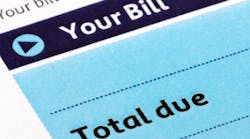Maximizing dental patient payments shouldn't be like pulling teeth
The easier dental offices can make payments for patients, the more practices will be able to collect on their bills. Technology can help with patient payment, so take advantage of it in your practice.
The patient payment landscape has changed considerably for both providers and consumers. With health care more accessible than ever, dental practices are seeing more patients walk through the door, but many are taking their money with them when they leave. Here are two new technologies to maximize patient payment revenue for dental practices.
A New York Times and Kaiser Family Foundation study indicates that while the number of uninsured patients decreased by approximately 15 million from 2013 through 2015, attempts to offset costs has required customers to pay more of their bills via higher deductibles and copayments. The optimum time to collect a payment is the moment a patient leaves the chair. But given the self-pay landscape, this simply can’t always be the case for practices. Help is at hand though, with two new patient-friendly payment technologies that are helping practices maximize revenue cycles long after a patient has left.
RELATED ARTICLE:Communicating patient payment options through scripting
Interactive voice response (IVR) at your service
Patients wanting to make a payment after leaving the practice have several options. They could call in or return to the practice to settle a bill at their own inconvenience, write and mail a check to the practice, or the practice could offer an easy-to-use service that enables patients to simply make a phone call and pay using interactive voice response (IVR).
IVR is a great way to improve the customer experience. Providing patients with a simple automated method to pay a bill, when and how they want to, significantly reduces the steps a patient must take to make a payment. IVR has the added benefit of letting patients know whether that payment has been accepted or declined, so that they, and you as the provider, can then take appropriate measures if the need arises.
But IVR technology isn't just a great way to improve payment collections, ensure compliance and enhance customer service. IVR will ultimately allow more time for dental staff to deal with more important practice activities.
Case in point
One BillingTree customer was receiving more than 300 out-of-hours calls per week, around a quarter of which were people simply looking to make a payment. Therefore, the practice experienced missed calls and lost out on a significant number of payments. They decided to introduce 24/7 IVR as part of their payment solutions strategy, and since its introduction they’ve seen a significant increase in the amount of payments, as well as improved customer experience.
RELATED ARTICLE:5 ways for your dental practice to improve the patient experience through payment methods
Recurring payment plans
Sometimes a one-off payment is not an option. A recurring payment becomes the next best solution for settling a bill, but this is often difficult for the practice to sort out.
Technology now offers practices large and small automated recurring payment solutions that give them the ability to automatically receive payments on a prearranged schedule, which benefits the practice revenue cycle. For each month or billing cycle, a new notification statement is sent electronically to the patient, often via email. The statement automatically triggers a payment, which is instantly taken out of the client’s account, usually via a card payment or e-check (ACH).
There are two main reasons why practices should explore recurring payments as an option:
1. Better cash flow—When patients sign up for recurring payments, funds will be posted to your account like clockwork, even after hours. Not only does this process improve cash flow, it also makes long-term financial planning much easier.
2. Improved convenience—Practices don’t need to actively manage billing cycles. With recurring billing, invoices and payments occur automatically without any direct intervention. This allows more time for other job-related tasks.
Path of least resistance
By offering patients limited options to pay, practices are limiting their own chances of recouping revenue, especially with liability now resting on patients and not insurers. Technology is readily available to remedy the situation. Practices can use these new technology-driven payment methods to offer a range of payment methods that suits everyone—patients, staff, and the business.

